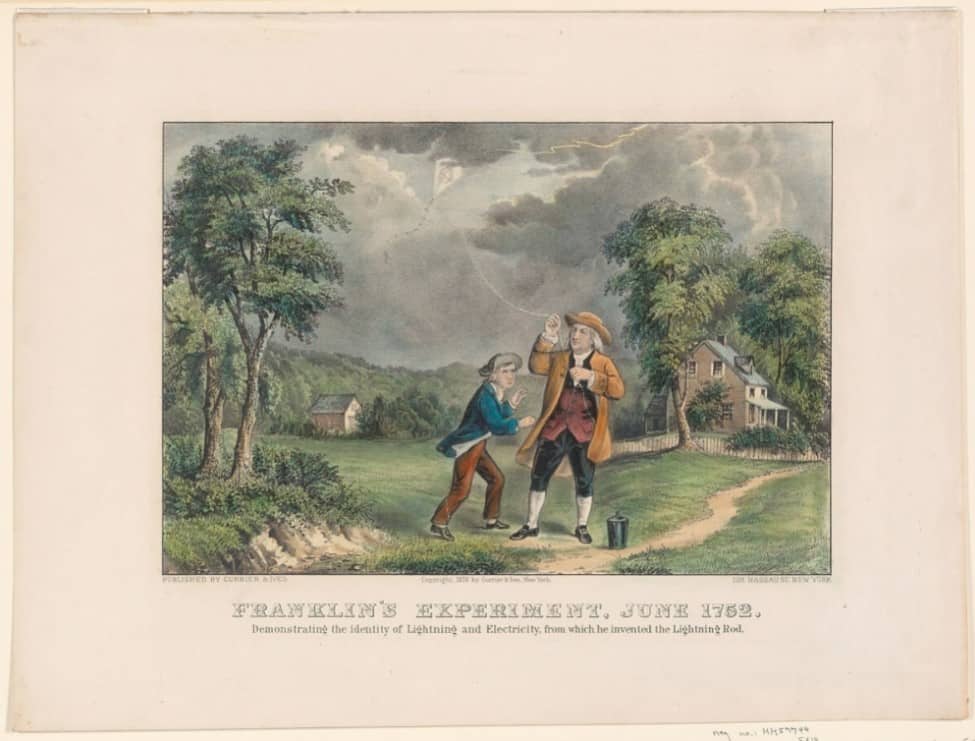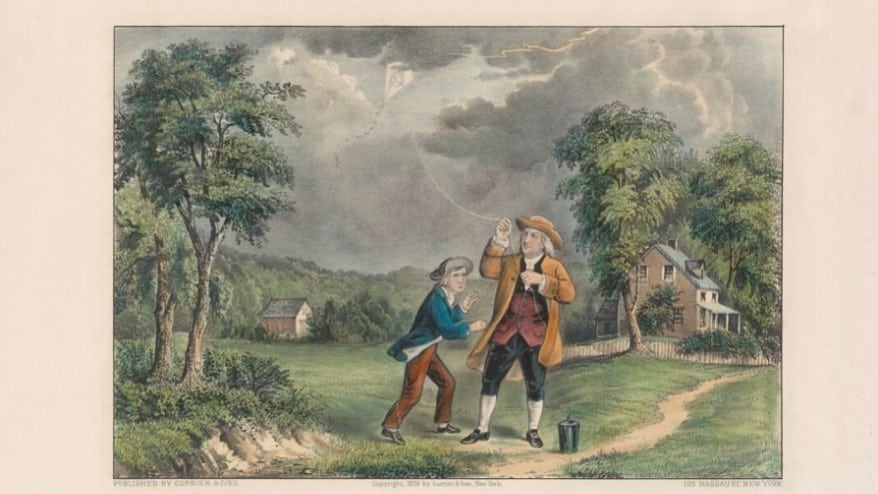
Some of the most iconic images of the American polymath Benjamin Franklin show him doing a very silly thing — flying a kite in a thunderstorm. This is a reference to a famous experiment that Franklin is believed to have done in 1752, confirming that lightning was an electrical phenomenon similar to that observed in primitive batteries of the time.
However, according to the Brazilian historian Breno Arsioli Moura, most illustrations of the experiment misrepresent what Franklin is believed to have done.
According to Moura, the purpose of the experiment was to show that electricity can flow like a fluid from the sky to the ground. To do this, Franklin fastened a small metal spike to a kite and connected the spike to a conducting kite string. The other end of the kite string was fastened to a metal key. Also tied to the key was an insulating silk ribbon, which was held by Franklin as he flew the kite.
Tell-tale spark
The idea was that the metal spike would collect electrical charge from the sky and the charge would then flow down the string where it would accumulate in the key. After some accumulation time, Franklin would put a finger near to the key and look for a tell-tale spark that would confirm the flow of electricity from the sky to the ground.
The above image was published by Currier & Ives 120 years after the experiment was done. Franklin is shown gripping the conducting string with his right hand and holding the key in his left hand. Moura points that if done this way, the experiment would simply not work because Franklin would short-circuit the current to earth.
Franklin is also shown with a boy who is assumed to be his son William – but William would have been in his early twenties at the time of the experiment.
No lightning
In many illustrations, Franklin is shown doing the experiment with lightning flashing near the kite, but Moura says he did not intend to draw lightning down on himself – he wasn’t stupid, after all. Finally, Moura says that Franklin recommended that the kite flier be under a roof or some other cover to ensure that the silk ribbon remained dry because a wet ribbon would conduct electricity. Indeed, Moura says that many depictions fail to show the silk ribbon, which was a key component of the experimental set-up.
Because of his role in American independence, Franklin is a much romanticised figure in the US, so it’s not surprising that some artistic licence has been taken with how his famous experiment is portayed. Moura also points out that Franklin’s own account of the experiment is vague and that the artistic depictions tend to reflect a description published in 1767 by the English chemist Joseph Priestley. Although Franklin is thought to have approved of Priestley’s description, Moura says that the two accounts differ on several important points.
So why is this important to Moura? He believes that the uncritical use of inaccurate illustrations in classrooms and textbooks could undermine the teaching of important experiments. He also says that poor illustrations could also encourage people to try to do unsafe experiments, like flying a kite in an electrical storm. He describes his research in the journal Science & Education.
Stale sweets
It’s always disappointing to bite into a gummy sweet only for it to be all hard and stale. Keeping them soft and fresh is an important issue given that texture can be just as important as taste for such candies.
Now, researchers in Turkey at Ozyegin University and Middle East Technical University have carried out a series of experiments to explore how changing key parts of the gummy-making process, such as the concentration of starch and gelatin, can affect the final product, as well as how the sweets behave when stored at different temperatures.
The researchers used a statistical model to describe how each combination affected the quality of the gummy sweets, finding that to keep the sweets as soft as possible for as long as possible, it was best to store them at a warm temperature.
After this sweet success, the researchers now plan to study the role of plant-based formulations, mould shapes, and packaging types on quality. The team describes its research in the journal Physics of Fluids.
